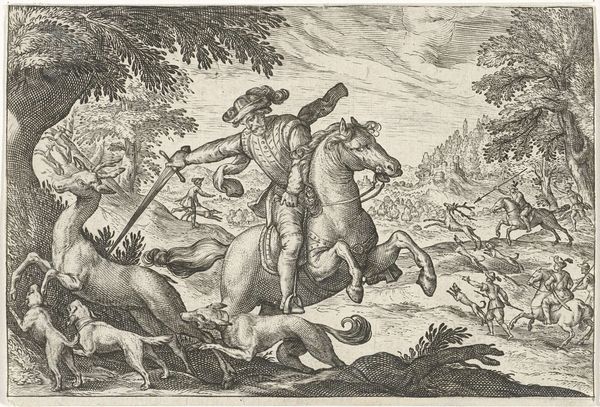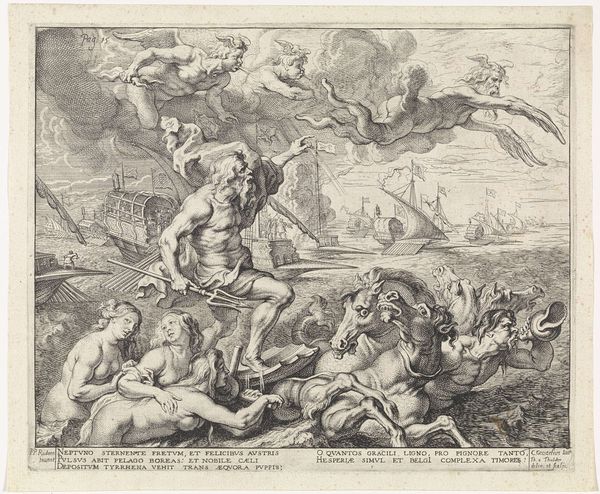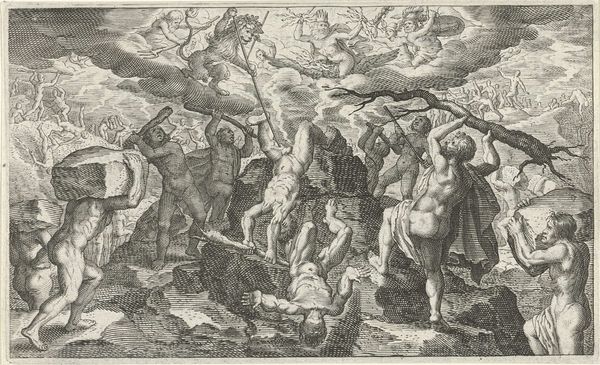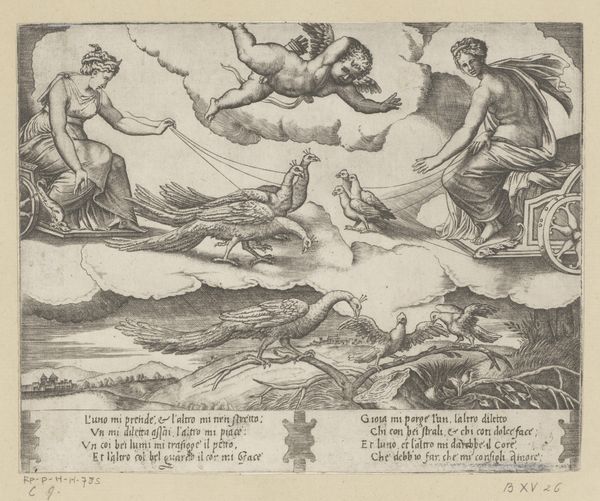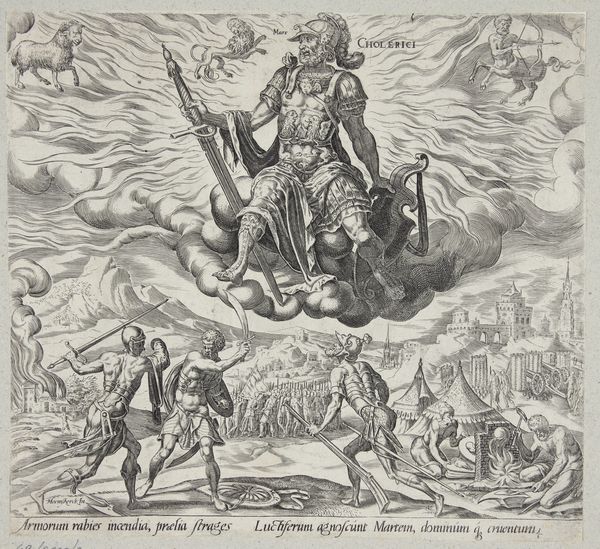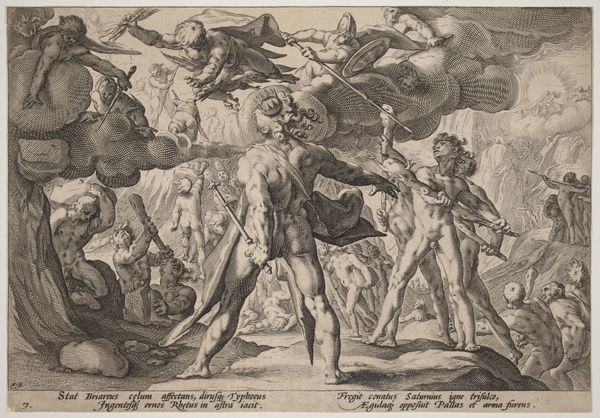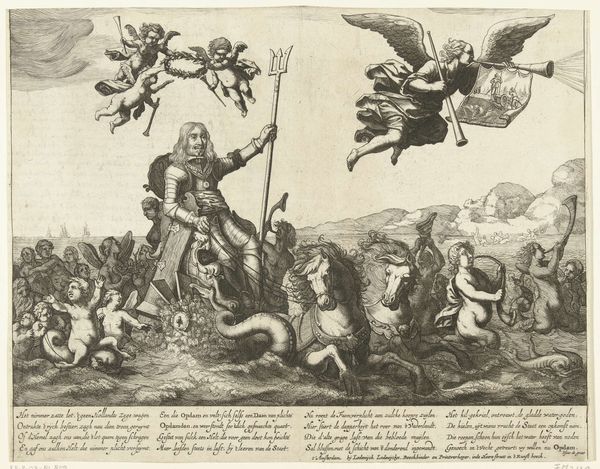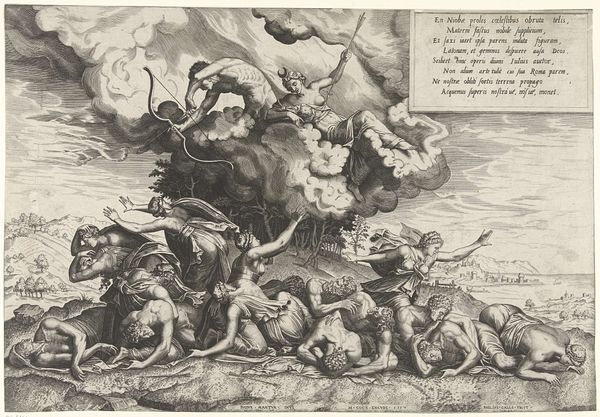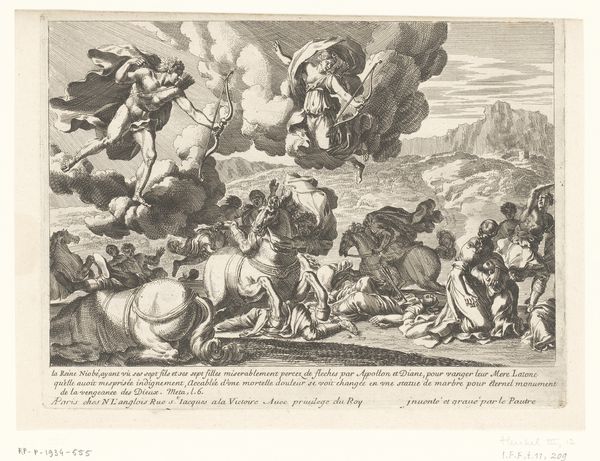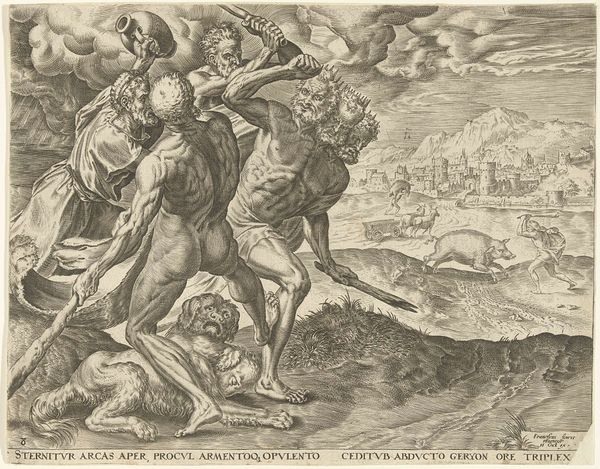
Zegewagen ter ere van Maarten Tromp, gesneuveld in de Zeeslag bij Terheide, 1653 1653
0:00
0:00
engraving
#
portrait
#
allegory
#
baroque
#
pen illustration
#
old engraving style
#
cityscape
#
history-painting
#
engraving
Dimensions: height 254 mm, width 315 mm
Copyright: Rijks Museum: Open Domain
Editor: Here we have "Triumphal Chariot in Honor of Maarten Tromp, Killed in the Naval Battle at Terheide, 1653," an engraving made in 1653 by Cornelis van Dalen I. The scene is so dynamic, chaotic almost, with horses surging from the sea, cherubs, and a central figure looking very self-assured. What can you tell me about the context surrounding this work? Curator: This engraving exists as a carefully constructed piece of political messaging. The Dutch Republic was at war with England, and Maarten Tromp was a celebrated naval hero, even though he died in battle. How do you think this image serves a specific function, considering the historical context? Editor: It seems designed to solidify Tromp’s image as a heroic figure. It almost looks like propaganda. The inclusion of Neptune's trident, for example, associates him with divine power and maritime dominance. And the cherubs definitely contribute to that idea. Curator: Exactly. Consider where this image might have been displayed, how it circulated, and who the intended audience was. This engraving would likely have been distributed to a wide audience through prints and public display, and it acted as a potent reminder of Dutch maritime power. Editor: So, it’s less about mourning his loss, and more about inspiring national pride. I guess that helps people deal with the loss and bolster support for the ongoing war effort. It’s interesting to think about art functioning in that way, with so much intention. Curator: Indeed. And beyond simply “inspiring national pride”, the choice to memorialize a hero by incorporating classical imagery would signal that the Dutch Republic itself was in its Golden Age, and should be regarded with the same gravity as prior empires. This print is less about Tromp as an individual and more about what his image does for the State. Editor: It changes how I see the image. It is no longer just a picture but part of a complex social and political landscape. Curator: It’s a good reminder to always ask, "Who benefits from this image and how?".
Comments
No comments
Be the first to comment and join the conversation on the ultimate creative platform.
